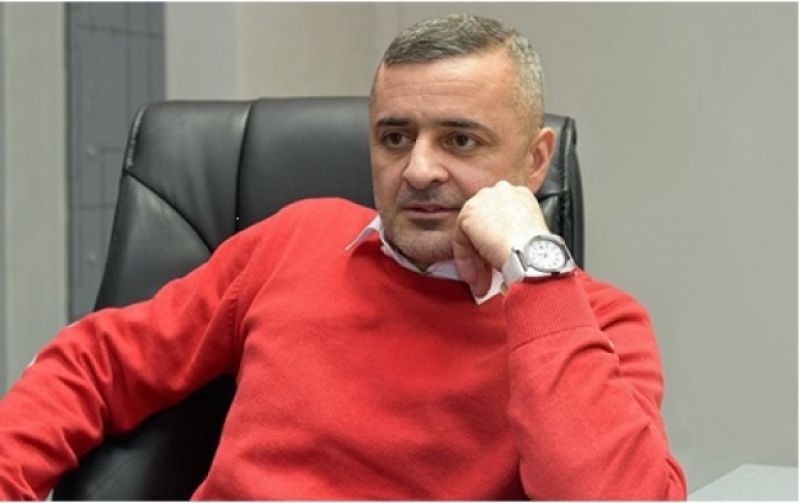
Azərbaycan Dövlət Kukla Teatrının nəzdində isə “Oyuq” teatr-studiyası fəaliyyət göstərir.
Theatrical talents shun regional opportunities amidst Azerbaijan's theatrical renaissance
In the wake of the implementation of the Presidential decree commemorating the 150th anniversary of the Azerbaijan Professional National Theater, a concerted effort has been undertaken to address personnel shortages in various regional theaters across the nation. As stipulated by the decree, studio theaters have been established in key cities including Ganja, Sheki, Lankaran, and Nakhchivan, with the intention of bolstering the local theatrical scene. This development, announced by the Ministry of Culture of the Republic of Azerbaijan, seeks to address a growing concern: the reluctance of youthful theatrical talents to pursue careers in regional theater.
While the capital city, Baku, boasts a thriving theatrical landscape, replete with talented performers, the regions have faced a noticeable dearth of skilled actors and actresses. Elman Rafiev, Director of the State Pantomime Theater, attributes this phenomenon to the disinclination of young artists to return to their regional roots. "There is no shortage of personnel in Baku theaters," he notes, "Young people from the regions who have received higher education in Baku do not want to return there. Everyone wants to stay in Baku. This is also the main reason for the shortage of personnel."
Notably, several acclaimed actors have originated from regional theaters, debunking the perception that metropolitan theaters are the sole path to success. Rafiev cites Elkhan Yunis and Elkhan Abbasov, hailing from the Ganja Theater, as examples. Despite their regional beginnings, these artists have garnered widespread recognition and prominence, proving that dedication and a mastery of their craft can lead to fame regardless of the geographic stage.
 Rafiev's insights into the realm of theater extend beyond the immediate concerns of personnel shortages. Drawing from his own experiences, he underscores the arduous journey toward success within the dramatic arts. "When the pantomime theater was created in 1994, we did not think that anyone would love us," he recalls, highlighting the perseverance required to gain traction and appreciation within the realm of performance. "It took us years to prove ourselves. It's just that you will achieve everything if you love art in yourself, and not yourself in art."
Rafiev's insights into the realm of theater extend beyond the immediate concerns of personnel shortages. Drawing from his own experiences, he underscores the arduous journey toward success within the dramatic arts. "When the pantomime theater was created in 1994, we did not think that anyone would love us," he recalls, highlighting the perseverance required to gain traction and appreciation within the realm of performance. "It took us years to prove ourselves. It's just that you will achieve everything if you love art in yourself, and not yourself in art."
As part of the multifaceted effort to invigorate regional theaters, the establishment of studio theaters is expected to play a pivotal role in nurturing emerging talents. Rafiev emphasizes the importance of formal education in this endeavor, viewing the newly created studios as conduits for professional actors to impart their knowledge and expertise to aspiring artists. He posits that a strong foundation in theater arts, facilitated by higher education, will be the catalyst for the growth and refinement of these fledgling talents.
Regarding the evolving landscape of theatrical interest, Rafiev dispels notions of waning enthusiasm for the stage. On the contrary, he perceives a mounting fascination with theater, attributing this surge in interest to innovative structures and immersive experiences. Acknowledging the contemporary era's technological advancements, Rafiev underscores how theaters are leveraging technology to enrich performances, utilizing elements like 3D visual effects to create captivating environments such as snowstorms, rain showers, and waterfalls. The objective, he states, is to provide audiences with engaging spectacles that transcend traditional boundaries.
However, Rafiev candidly addresses the challenge of aligning performances with audience preferences. The modern theater, he contends, must be keenly attuned to its patrons' desires and preferences. "What's the point of putting on this play if no one comes to the play?" he asks rhetorically, emphasizing the symbiotic relationship between the theater and its audience.
Despite the optimism surrounding Azerbaijan's theatrical resurgence, Rafiev acknowledges minor impediments that continue to beset the industry. Financial constraints, especially as theaters transition from being fully government-funded to partially self-sustained, represent a recurring challenge. Rafiev explains that while theaters are partially supported by the budget, they must also generate income to cover operational expenses and create new productions. Occasionally, he notes, the viability of staging new shows is contingent upon audience turnout, creating financial intricacies that require resolution.
In conclusion, Rafiev's perspective offers insight into the intricate dynamics shaping Azerbaijan's theatrical landscape. As the nation endeavors to cultivate regional theatrical talents and maintain a vibrant artistic scene, the intersections of education, technology, audience engagement, and financial sustainability will undoubtedly continue to shape the evolution of its theaters.













Leave a review